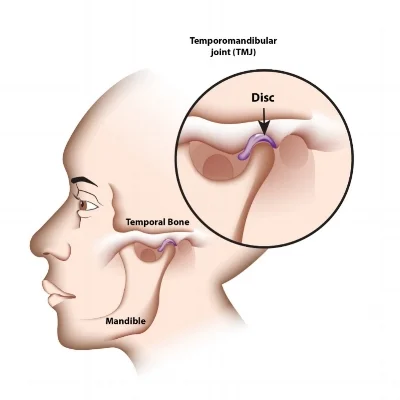In today's post we will be exploring the link between muscle imbalance and jaw pain. We will also be discussing strategies for correcting these muscle imbalances that may be contributing to your discomfort.
There are a wide variety of issues that can cause or contribute to jaw pain. In the last blog update, Dr Willis of Burke Dental discussed some of these potential causes. Jaw pain can be caused by bruxism (grinding the teeth or clenching the jaw muscles), poor alignment of the teeth (which will create uneven bite forces and asymmetrical muscle contraction), cavities, ear infections and poor joint biomechanics of the jaw.
Now that we have discussed all of the potential causes, we can begin to break down the relevant anatomy. The joint associated with the jaw is called the temporomandibular joint (TMJ for short). It is composed of the mandible (jaw) and it’s attachment on the skull (the temporal bone). The TMJ is unique because of how it functions; it is both a hinge and a sliding joint. The dual function is made possible by the existence of a disc, which lies in between the mandible (jaw) and the temporal bone (skull). There are many muscles that act on the TMJ, and help to open and close the mouth. For the purposes of this article we will focus on one of the more superficial muscles- the temporalis muscle.
The temporalis muscle is a fan shaped muscle that lies on either side of the skull. It spans from the temples to behind the ears. The temporalis is the most powerful jaw muscle. Its main function is to close the jaw. Asymmetry in muscle tension and trigger points within the temporalis creates imbalance. Imbalance in these muscles will aggravate alignment issues in the TMJ. Our goal with the strategies we will be providing you with is to restore balance and symmetry to the temporalis muscles. We will accomplish this by working out any trigger points (spasm) within the muscles. The maneuver that will be demonstrated below is called the Temporalis Active Release.
Step 1:
With your jaw closed, place your thumbs on either side of your skull- just in front of the ears.
Press along the skull in the area where the temporalis muscle lies (just behind the eye socket to just behind the upper cartilage of the ear) until you find areas that are tender.
Step 2:
Place and hold firm pressure over the tender areas that you have identified in Step 1.
Maintain Pressure while you slowly open the jaw as wide as you can.
Step 3:
Close the jaw slowly WHile maintaining pressure on the trigger point that you are working on.
Step 4:
Continue your search through the temporalis muscle for more tender areas.
Repeat Steps 2 and 3.





